Welcome back to my ‘photography adventures’ today at the Ridgefield National Wildlife Refuge, where it poured down rain all day! I was actually hoping that some of the precipitation could have been in the form of snow, to give some of the shots a little pizzazz! But it wasn’t to be and I ended up shooting only 234 frames all day (6 hours of shooting)–about 98% of them were with flash due to the very dark, low cloud cover. I typically average about 500 frames on a day. I’m sure this is my rainiest day ever at the refuge in four years of coming to the refuge. The forecast I read the night before indicated some rain breaks, but I sure didn’t see them!
With the rain, I had soaking wet bean bags, camera, and lens at times during the day. Sometimes, I was forced to close up the windows, as it just became too much. But this was the day I chose to come to the refuge and I was going to make the best of it. The temperature was in the low 30’s (Farenheit)– not what a lot of folks call cold, but with the wind blowing rain through the cab at times, it was quite an adventure. I also want to let it be known that I wasn’t the only ‘crazy person’ out there–I spotted at least 6 to 8 other cars during the day (not many!).
I got my gear ready and headed out onto the 4.2 mile auto route by 7:45 a.m. I figured that today, about every shot was going to have to be a flash shot–it was just so dark and the clouds were very low. Between posts 6 & 7 I came across the old standby bird, always seen foraging on the roadway this time of year–the Golden-crowned Sparrow. When I approach in the truck, they all scatter to the blackberry bushes, which is where I shot this guy (actually, I think it’s a gal–but you know what I mean).
[Reminder: all shots can be enlarged by clicking on them. They are much better in large view.]
I drive on to the Ash tree forest and check to see if I can spot the injured female Hooded Merganser I posted a shot of on Nov. 4th’s blog entry. On that day, she was about 100 feet into the forest on the right, standing on an old naily board that somehow got into the water. But today, no board and no merganser at this spot. I drive on past post #9, and about half way to post #10, spot a pretty female Hooded Merganser standing up out of the water on a wet snag. She’s preening just like the injured one did the day I snapped its photo. It’s really dark in this forest and I can’t tell whether this bird is injury free or not. But I take a bunch of shots with the flash. When I get home and view the shots on the monitor, I discover that it is the same injured bird I photographed Nov. 4. The good thing about this is that she appears to be doing fine although it’s hard to tell if the injury bothers her or not. She seems to do a lot of preening but maybe that is normal. She is able to fly as I saw her fly away after posing for a few shots today. The injury itself doesn’t look very good but she’s survived almost 3 weeks since I first saw her, so I guess we can’t ask for much more than that.
Both of the following shots show the injury, but the second shot is a close up of it. Please don’t enlarge these shots if you don’t like seeing animal injuries.
As I drive on through past post #12, I see some Red-tailed hawks out in the fields and also there are many swans in Rest Lake. Some take flight but I have a heck of a time getting any keepers due to the low light situation I’m in. I drive a little ways forward (here I’m facing the 3 trees), and I see a small whitish bird land on the road about 40 feet in front of the truck. “What in the world is this?” I ask myself. I turn off the engine, afraid to drive any closer before I get at least some shots of this guy.
He’s on the right shoulder area of the road so I have to shoot out the passenger window. To do this, I grab my camera, making sure it’s set to Manual, f6.3, 1/250th, and the flash compensation is at -2/3–I don’t want to blow the whites. I crawl up on top of my wooden step stool that is always positioned in the passenger’s seat. With my camera, head, and arms hanging out the window at a very weird angle, I just start snapping away–I gotta get this bird! But, the bird is facing away from me, so I have a great view of its back feathers while it is busy pecking tidbits off the ground and occasionally turning its head, giving me a shot of one eye.
I try making all the funny bird noises I can think of to get its attention in hopes it might turn its body around some. It doesn’t work. He’s giving me the cold shoulder! After taking a bunch of shots–most of which ended up terrible as it was super difficult holding the camera still while hanging out the window. I decide to start the engine and re-position the truck so I can shoot from the driver’s side window–a much easier shot. I also have my Molar Bean Bag on this window so that will help a lot. I drive about 10 feet closer and the bird doesn’t flinch. I take a bunch of shots at this angle, still making noises in hopes to get him to change positions so I can see something besides his back.
I then try a really risky move–driving past him and stopping at an angle to again shoot from the passenger side window. Will he let me actually drive past him without flying? As I get up beside him, he decides he is in danger and walks along side the truck, parallel to it, for about 25 feet before stopping to let me pass him. Remember, I need to get on the other side of him so I can shoot him from the front. He actually lets me pass him so I stop and take more pictures. At some point I got a side shot of him which is posted below. But he even let me back up and pass him again to get another angle. Here are a couple of shots of the Snow Bunting (a lifer for me!).
As I drive around the “field” area (post #13) I notice so many herons and egrets in the fields hunting for voles–many more than usual. The rain must bring the voles out. I saw from a distance, one egret catch a vole but I couldn’t get the shot. He flew off to eat the vole far away from me. I’m noticing this time of year that blue herons standing on the road are quite comfortable to let you drive by them within a few feet of your car. I haven’t had that happen with an egret yet.
As I finish the big curve heading for post #14 I see two coyotes on the road a couple hundred feet in front of me trotting/running. I pick up speed a little bit and I see them take a right turn at post #14. They climb up over the berm on the right. I pull up to post 14 slowly checking for any sign of them where I saw them exit the road. One of the coyotes had stopped at the top of the berm and was looking back right at me. I take some quick shots and he looks like he wants to go as he is looking around. I make some coyote “sounds” to try to keep his attention, which worked for a few more seconds and a few more shots. This was a beautiful animal and I was surprised how nice it looked even in the pouring rain.
That concluded my first trip around the loop–it took nearly 3 hours which is about an hour longer than my usual time. I did stop and talk with another photographer briefly on this first loop and the Snow Bunting kept me occupied for quite a long time.
As I start the second loop, I stop at the hunter’s gate (post 4) to see if the Black Phoebe that I saw last time out (see Nov. 12 blog) is still there. No luck! I’ve seen too, where folks have seen the phoebe near post #3. It’s still raining and I’m driving on past post #7, where I can see the observation blind parking lot in the distance. On this stretch, I always check this one perch to see if it is occupied by a bird. It’s a snag about 8 inches in diameter that comes up from the ground and comes to a point at the very top, maybe five feet tall. It’s on the right side of the road, and overlooks the water. When the sun is out (not today!) in the morning hours, it is shining beautifully on this perch and makes a fine shot (if something is perched on it!).
As I approach this perch, I see a Kingfisher on it–for the first time ever. I stop immediately at a point where the perch is still forward of my position some, and off to the right but I don’t want to risk flushing the bird. I quickly grab the camera and shoot two bursts. At this point the bird has its back to me and is facing away from me. After the first two shots, the bird turns its head toward me to see what made the camera noise. I get one more shot off and she flies. Here’s the shot from about 45 feet away.
Near the corn field between posts # 7 & 8, I see a half dozen Sandhill Cranes in the distance. As I watch, some of them actually wade into the water. These guys couldn’t care less about the pouring rain! Here’s one view of what I was seeing.
Driving on around post #12, I see a hovering Red-tailed Hawk quite aways off and he makes his descent to catch his prey in the field. He was too far off and light was too scarce to get a decent shot. Still fun to watch! I also spotted a beautiful male Bufflehead in Rest Lake but the distance and lack of light gave me unacceptable results for a shot.
Here’s the only flight shot that I got with the low light conditions. A Tundra Swan takes off from Rest Lake in the rain. Note the bird has a band on its leg. Shutter speed here was only 1/400, not really fast enough (at least for me) to get a sharp flight shot.
The third and last time around the loop was pretty much a bust. But I was still pretty happy with the Snow Bunting (a lifer), the coyote, and the Kingfisher. And I was really glad to see the injured merganser still otherwise healthy and surviving. I’m satisfied with the few shots I got, especially considering the pouring down rain. All but two of the posted shots above were taken with flash. I believe that if I had not used flash, I would have walked (driven!) away with nothing today. Boosting ISO to where it would have been needed would have introduced much unwanted noise. So remember, flash is your friend!
I also was reassured that the 7D and the Canon 400mm f5.6L lens can stand to get pretty wet without any harmful effects. After shooting in the rain for a time, I would bring them into the cab of the truck and let the water on them dry through evaporation. I did not try to wipe the rain off with a towel as that would tend to force water into places where it shouldn’t be. I was also careful not to point the lens skyward enough to allow rain to fall on the front glass. The lens hood keeps the glass well protected. I took reasonable precautions by bringing the camera in out of the rain when I wasn’t actually shooting. But I didn’t let the rain stop me from shooting when I had an opportunity.
Thanks again for stopping by to check out this week’s episode of my shooting adventures! Hope to see you back again soon.

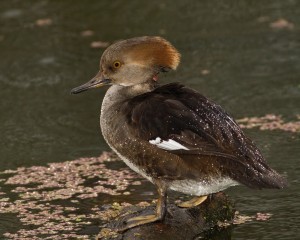
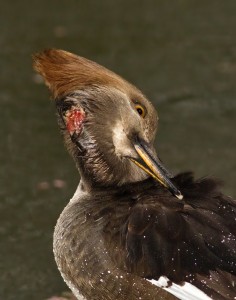

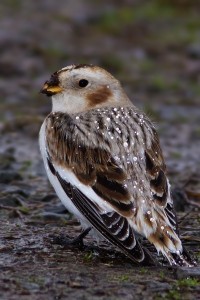
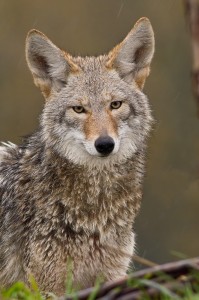



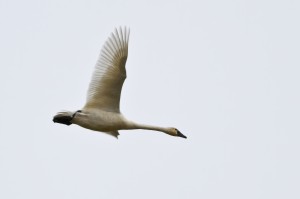
Hi, Dennis. Bruce sent me a link to your site and am enjoying it. Your travails in getting the bunting shot sure struck a chord! But, gosh, if you don’t already have something like Birdjam on your ipod, it would be well worth the expense! On the other hand, we do find when these little guys get away from their typical range, they often won’t respond well even to the recordings…guess they know something’s “not quite right” about the environs…lucky you for getting such a cooperative beautiful little bird! My wife’s the real birder of the two of us, and between your photos and Bruce’s, I’m having my hands full keeping the allure of a lifer from making us take a 150 mile trip with gas at well over $3!
Wow Dave! It’s really nice to get referrals via word of mouth from folks who have already seen the site. I’m really glad you took the time to check it out! Yes, I have the iBird app on my Ipod and use it often to call but when I saw this bird, I did not have any idea what it was (until I took the time at home to look it up). I was more concerned at the time about getting a decent shot. I was so fortunate to encounter such a carefree (or naive) bird! Out of all the acres on the refuge, he chose to land in front of my truck. So cool and doesn’t happen very often! If you decide to make the drive out here, be sure to take in the Tualatin NWR as well as Ridgefield. Hope you can make it some time! Thanks much for your kind words and for visiting the site.